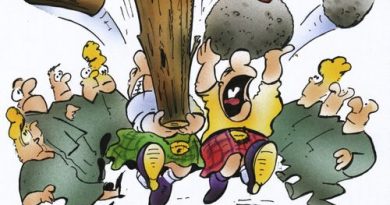St. Patrick`s Day – Topic 5
http://www.facebook.com/OposicionesInglesRP/
http://blog.oposicionesingles.com
Guess what!
The shamrock is a popular Irish symbol, but it is not the symbol of Ireland. As early as the medieval period, the harp has appeared on Irish gravestones and manuscripts. However, it is certain that the harp was popular in Irish legend and culture even well before that period.
Since the medieval period, the harp has represented the nation. King Henry VIII used the harp on coins as early as 1534. Later, the harp was used on Irish flags and Irish coats of arms. The harp was also used as a symbol of the Irish people during their long struggle for freedom. Starting in 1642 the harp appeared on flags during rebellions against English rule. When Ireland became an independent country in 1921, it adopted the harp as the national symbol.
————————————————————————————-
https://shop.oposicionesingles.com/
TOPIC 5.
GEOGRAPHICAL, HISTORICAL AND CULTURAL FRAMEWORK OF THE ENGLISH SPEAKING COUNTRIES. DIDACTIC APPLICATION OF THE MOST OUTSTANDING GEOGRAPHICAL, HISTORICAL AND CULTURAL ASPECTS.
Our State legislation, LOMCE 8/2013 and RD 126/2014 28th February establishing the minimum teaching requirements for Primary Education (a reference to the curriculum of the Autonomous Community should be included here) include the knowledge of a foreign language and the development of basic communicative competence as one of the objectives to be achieved along this stage.
Due to the relevance of the sociocultural dimension in order to develop this ambitious goal (communicative competence), RD 126/14 establishes the relations amongst three essential curricular elements: content, evaluation criteria and learning standards; stating that the development of sociocultural and sociolinguistic aspects must be present if the four content blocks. Furthermore, the evaluation criteria, defined as the specific referents to evaluate students´ learning, include the sociocultural and sociolinguistic dimension, stating that learners should identify basic, specific and meaningful sociocultural and sociolinguistic aspects regarding daily life, life conditions, interpersonal relations, behaviour and social conventions, etc.
The relation between these curricular elements (competences, content and evaluation criteria) is further described in Order ECD/65/2015. In this regard, the sociocultural dimension in the teaching of a FL is closely linked to competence number 7, Cultural Awareness and Expression, which refers to the knowledge of different cultural and artistic manifestations; the skills to understand and appreciate the Spanish and Anglo-Saxon cultural heritage, its richness and diversity; and the attitudes that lead to and respect for variety of cultural expression.
Throughout this presentation we shall focus on the sociocultural aspects of English-speaking countries. Nonetheless, analysing all the countries in which English is used as the first language would be an endless task; therefore, we shall refer to the two most outstanding and influential ones: the United Kingdom and the United States of America.
Finally, we shall define some methodological guidelines to integrate sociocultural knowledge within a practical and realistic action-based approach, analysing how the knowledge of the English-speaking countries culture is usually a source of motivation, since students are already familiar with music, films and traditions from those countries.




